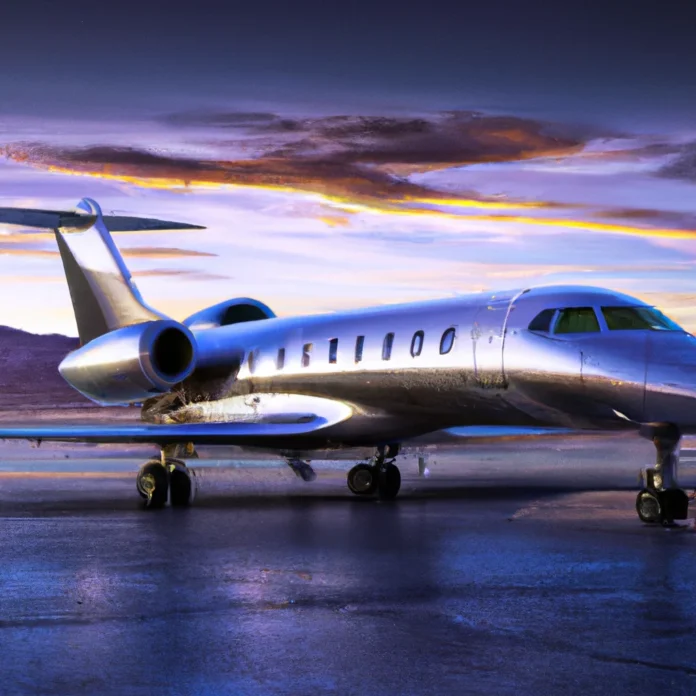Introduction: The Fascination With Expensive Aircraft
There is an undeniable allure to the world of expensive aircraft. These machines represent the pinnacle of human engineering, pushing the boundaries of speed, luxury, and innovation. Whether it is the roar of a jet engine or the gleam of custom interiors, the most costly planes capture our imagination and symbolize ultimate achievement in aviation.
People are drawn to these aircraft not only for their price tags but also for what they represent: power, technological mastery, and a glimpse into the future of flight. From military superjets to ultra-luxury private planes, the fascination extends across industries and continents.
Why Are Some Planes So Expensive?
The staggering price tags attached to certain planes may seem incomprehensible at first glance. However, a closer look reveals a complex blend of factors that drive costs sky-high, making these aircraft exclusive to a select few.
What Factors Drive The Cost Of An Airplane?
Several elements combine to make some planes the most expensive in the world. These range from the raw materials used in construction to the sophistication of onboard systems and the immense investment in research and development. Each layer adds complexity and cost, resulting in machines that are both rare and remarkable.
Materials and Engineering
The use of advanced materials such as titanium alloys, carbon composites, and high-strength aluminum dramatically increases both durability and cost. Precision engineering ensures these materials are shaped and assembled to exacting standards, often requiring specialized facilities and skilled labor.
Advanced Avionics and Technology
State-of-the-art avionics are a hallmark of expensive aircraft. Integrated systems for navigation, communication, and flight control must function flawlessly at high speeds and altitudes. These technologies are continually evolving, demanding ongoing investment and expertise.
Customization and Luxury Features
For private jets and VIP transports, luxury customization is a major cost driver. Hand-stitched leather seats, gold-plated fixtures, and bespoke entertainment systems transform the cabin into a flying palace, tailored to the owner’s every desire. We covered these details in our post on the world of most expensive private jet luxury and tech.
Defense and Security Systems
Military jets and government aircraft incorporate advanced defense systems such as radar jamming, missile countermeasures, and reinforced fuselages. These features are vital for survival in hostile environments but add significant cost and complexity.
Research and Development Costs
Developing a cutting-edge aircraft requires years of research and development. Teams of engineers, designers, and test pilots push the limits of technology, often encountering unforeseen challenges that drive budgets even higher.
Operational and Maintenance Expenses
Even after construction, operational and maintenance expenses remain substantial. Specialized crews, custom spare parts, and rigorous safety protocols are essential to keep these aircraft airworthy and safe.
Historical Perspective: The Evolution of Expensive Aircraft
The journey toward today’s most expensive aircraft has been shaped by decades of technological leaps and shifting priorities. Each era brought new innovations, raising the bar for what was possible—and what it would cost.
Milestones in Aviation Technology
From the Wright brothers’ first powered flight to the advent of supersonic jets, aviation has witnessed transformative moments. The introduction of jet propulsion, composite materials, and digital avionics marked major turning points, each escalating both performance and expense.
How Have Aircraft Prices Changed Over Time?
Aircraft prices have soared in tandem with advancements in technology and materials. What once cost millions now demands billions, especially for military and government projects. Inflation, global supply chains, and the demand for greater capabilities all contribute to this upward trajectory.
Top 10 Most Expensive Planes Ever Built
Throughout history, only a handful of planes have reached the upper echelons of cost. These select few, whether built for war or luxury, stand as testaments to human ambition and ingenuity.
Ranking Criteria: How Do We Define ‘Most Expensive’?
We consider several factors when ranking the world’s most expensive planes:
- Acquisition cost including research, development, and manufacturing
- Customization and upgrades tailored to specific clients
- Operational expenses over the aircraft’s lifespan
These criteria help distinguish between raw manufacturing cost and the total investment required for each aircraft.
Military vs. Civilian Aircraft: Which Are Pricier?
Military aircraft often top the list due to their advanced technologies and defense systems. However, certain ultra-luxury private jets rival even the most sophisticated fighters in cost, thanks to their bespoke interiors and exclusive features. For a deeper comparison, see our coverage of the most expensive jet in the world.
Spotlight: The Most Expensive Plane In The World Today
One aircraft currently stands above all others in terms of price, technology, and prestige. This section examines the details that set it apart and justify its unmatched valuation.
What Is The Name Of The Most Expensive Plane?
The title of most expensive plane is widely recognized as belonging to the Air Force One (VC-25B)—the latest iteration of the iconic aircraft that serves as the flying White House for the President of the United States.
Who Owns The Most Expensive Plane?
The United States government owns and operates this aircraft, ensuring it meets the highest standards of security, reliability, and performance. Its use is reserved for the President and select dignitaries, making it a symbol of national power.
How Much Does The Most Expensive Plane Cost?
The estimated cost for the current Air Force One program exceeds $5.3 billion USD when factoring in research, construction, customization, and security systems. This figure reflects not just the aircraft itself but the extensive infrastructure and technology required to support its unique mission.
What Makes This Plane So Expensive?
Several key factors contribute to Air Force One’s extraordinary price, from its engineering to its unmatched defense capabilities.
Design and Engineering Marvels
The aircraft’s airframe is based on the Boeing 747-8, but extensive modifications transform it into a flying command center. Reinforced structures, specialized wiring, and custom electronics are integrated with painstaking precision.
Cutting-Edge Technology
Air Force One is equipped with state-of-the-art communications, encrypted networks, and advanced avionics. It can operate as a mobile command post, maintaining secure contact with military and government networks worldwide.
Unique Features and Capabilities
Among its many unique features are:
- Airborne medical facilities
- In-flight refueling capability
- Self-defense systems and electronic countermeasures
- Luxurious meeting rooms and private suites
For more on these exclusive features, read our full analysis of the truth behind the most expensive plane.
Performance Specifications
Beyond luxury and security, Air Force One is a high-performance aircraft capable of remarkable feats in the air.
Speed and Range
The VC-25B can cruise at speeds up to 650 mph (1,046 km/h) and has a range of approximately 7,800 miles (12,553 km) without refueling. The roar of its engines and the smoothness of its flight create an atmosphere of both power and comfort for those onboard.
Payload and Capacity
The aircraft can accommodate over 70 passengers, including senior staff, security personnel, and press corps. Its cargo holds are designed for flexibility, allowing rapid reconfiguration for different missions.
Stealth and Defense Systems
While not a stealth aircraft in the traditional sense, Air Force One employs sophisticated countermeasures to detect and deflect threats, ensuring the safety of its occupants under any circumstances.
Who Built The Most Expensive Plane?
The creation of Air Force One is a collaborative effort involving some of the world’s leading aerospace companies and government agencies.
Manufacturer Profile
Boeing is the primary contractor, responsible for the design, assembly, and integration of the VC-25B. Their decades-long experience in both commercial and defense aviation make them uniquely suited for this project.
Development Timeline
The current program began in the mid-2010s, with delivery expected in the late 2020s. Development has involved rigorous testing, design revisions, and close cooperation with military and security experts.
Behind The Scenes: Building The World’s Most Expensive Plane
The journey from concept to airborne reality is fraught with challenges, requiring meticulous planning and coordination at every stage.
Research and Development Challenges
Innovating at the highest levels means overcoming technical and logistical hurdles. Engineers must anticipate a wide range of scenarios, from cyber threats to mechanical failures, and design solutions that are both robust and adaptable.
Testing and Quality Assurance
Before entering service, the aircraft undergoes exhaustive testing. Every system—from engines to communications—is scrutinized under extreme conditions to guarantee reliability. This process involves hundreds of hours in simulators and on the tarmac, as well as real-world flight trials.
Collaboration With Governments and Agencies
Building Air Force One requires input from numerous government agencies, including the Department of Defense and the Secret Service. Their requirements shape everything from cabin layout to electronic security, making this a truly collaborative project.
Inside The Cockpit: What Is It Like To Fly The Most Expensive Plane?
Piloting Air Force One is a responsibility reserved for the most skilled aviators. The experience combines technical mastery with the pressure of carrying the world’s most influential passenger.
Pilot Training and Requirements
Only the best-trained pilots in the U.S. Air Force are selected for this role. They undergo rigorous training in both flight operations and emergency protocols, preparing them for any scenario that may arise in the air.
Flight Experience and Controls
The cockpit is equipped with advanced flight controls, ergonomic seating, and digital displays that provide real-time data on every aspect of the aircraft’s performance. Pilots describe the sensation of flying Air Force One as both exhilarating and deeply humbling.
Luxury and Comfort Features Onboard
Passengers enjoy an atmosphere of comfort and security, with plush seating, gourmet dining, and quiet, climate-controlled cabins. The attention to detail in every fixture and furnishing creates a sense of calm even at 35,000 feet.
As experts often say:
“The true value of an aircraft lies not just in its price tag, but in the lives it touches and the history it helps shape.”
Security and Defense: How Safe Is The Most Expensive Plane?
Security is the paramount concern for Air Force One, and its systems are designed to handle the most severe threats imaginable.
Advanced Countermeasures
The aircraft incorporates electronic warfare suites, anti-missile flares, and radar jamming technology. These systems are continually upgraded to stay ahead of emerging threats, ensuring the President’s safety at all times.
Survivability in Combat Scenarios
In the unlikely event of an attack, Air Force One is designed to withstand significant damage and maintain operations. Its reinforced structure and redundant systems provide multiple layers of defense against hostile actions.
Who Uses The Most Expensive Plane?
The exclusivity of Air Force One is matched only by the significance of its passengers. It serves a variety of roles, from diplomatic missions to emergency evacuations.
Military Applications
While primarily a transport for the President, Air Force One is also a strategic asset for the military, capable of functioning as a command center during crises. Its ability to remain airborne for extended periods adds to its strategic flexibility.
VIP and Head of State Usage
Only the highest-ranking officials and select foreign dignitaries are granted access to Air Force One. The plane’s aura of authority and prestige is unmatched, reinforcing its position as a symbol of national power.
Global Impact: How Does This Plane Influence World Affairs?
Air Force One is more than just a means of travel—it is a tool of diplomacy, strategy, and international relations.
Strategic Importance
By enabling the U.S. President to travel swiftly and securely anywhere in the world, Air Force One plays a vital role in global strategy. Its presence alone can signal commitment, reassurance, or deterrence, depending on the context.
Diplomatic and Political Implications
The aircraft serves as a mobile embassy, hosting meetings and negotiations that shape world events. Its arrival in foreign capitals is often accompanied by media coverage and heightened security, emphasizing the gravity of the visit.
Economic Impact
The development and maintenance of Air Force One support thousands of jobs in the aerospace sector. Its influence extends into allied industries, from avionics to security, multiplying its economic footprint. In our post on the truth behind the most expensive plane, we examined these broader impacts in detail.
How Does The Most Expensive Plane Compare To Its Rivals?
While Air Force One holds the crown, several other aircraft compete in terms of technology, luxury, and exclusivity. Comparing these giants reveals both common themes and unique strengths.
Comparison With Other High-End Military Aircraft
Fighter jets like the F-22 Raptor or B-2 Spirit boast advanced stealth and combat capabilities. However, they lack the combination of range, comfort, and command facilities found on Air Force One, making the latter uniquely versatile.
Comparison With Ultra-Luxury Private Jets
Ultra-luxury jets such as the Gulfstream G700 or the Airbus ACJ350 offer exquisite interiors and advanced entertainment systems, but they do not match Air Force One’s security and communications features. For those interested in the nuances of private aviation, our article on why some choose to rent instead of buy a private jet offers valuable context.
What Are The Maintenance And Operating Costs?
Owning and operating the world’s most expensive plane involves ongoing expenditures far beyond the initial purchase price. These costs are justified by the unique demands placed on the aircraft and its mission.
Annual Upkeep Expenses
Annual maintenance can cost tens of millions of dollars, covering everything from engine overhauls to avionics upgrades. Specialized teams work year-round to keep the plane in peak condition.
Crew and Support Requirements
Operating Air Force One requires a large, highly trained crew, including pilots, flight engineers, maintenance personnel, and security staff. Each plays a crucial role in ensuring both safety and mission success.
Fuel and Logistics
The plane’s size and range demand vast quantities of fuel, with logistical support extending to every airport it visits. Coordinating these efforts requires meticulous planning and substantial resources.
Can You Charter Or Buy The Most Expensive Plane?
For most, the idea of owning or flying on the world’s most expensive plane remains a fantasy. The exclusivity of Air Force One is enforced by strict controls and policies.
Who Can Afford It?
Only governments and heads of state possess the financial and logistical means to operate such an aircraft. Even billionaires find the requirements and restrictions prohibitive, cementing Air Force One’s status as a true one-of-a-kind asset.
How To Purchase Or Lease
While it is not possible to purchase or lease Air Force One, other high-end jets are available for private ownership or charter. Those seeking similar luxury and capabilities often turn to custom-built private jets, which we explored in our in-depth look at the most expensive jet in the world.
What Does The Future Hold For Expensive Aircraft?
The aviation industry continues to innovate, with new technologies poised to shape the next generation of high-cost aircraft. The future promises even greater advances—and potentially, even higher price tags.
Emerging Technologies In Aviation
Hypersonic flight, artificial intelligence, and eco-friendly propulsion systems are on the horizon. These advancements will likely redefine both performance and cost, setting new benchmarks for what is possible in aviation.
Will Planes Get Even More Expensive?
As technology advances, so too does the investment required to stay ahead. Increased demand for security, comfort, and performance will likely push prices higher, especially for government and VIP aircraft.
Sustainability And The Cost Of Innovation
Environmental concerns are driving research into sustainable aviation fuels and more efficient engines. While these innovations may introduce new costs, they also offer potential savings and benefits in the long run.
Frequently Asked Questions About The World’s Most Expensive Plane
Q: What is the current most expensive plane and why?
A: The Air Force One VC-25B is the most expensive plane, due to its advanced security, technology, and custom features.
Q: Can private individuals fly on Air Force One?
A: No, access is strictly limited to the President, senior officials, and select guests.
Q: How much does it cost to operate Air Force One annually?
A: Operating costs can exceed $200 million per year, factoring in maintenance, fuel, and crew.
Q: Are there any comparable private jets?
A: While some private jets approach Air Force One in luxury, none match its security or command capabilities.
Q: Will there be a more expensive plane in the future?
A: Ongoing innovation and rising requirements suggest that future aircraft could set new records for cost and complexity.
Conclusion: The Legacy Of The World’s Most Expensive Plane
The most expensive plane in the world stands not just as a marvel of engineering, but as a symbol of ambition, power, and the relentless pursuit of progress. Its legacy will inspire future generations of aviators, engineers, and leaders, reminding us of what can be achieved when innovation and necessity converge. For those seeking further insights into the world of luxury aviation, Autoxite offers comprehensive coverage and expert analysis—visit Autoxite to stay informed about the latest in high-end aircraft and aviation technology.


